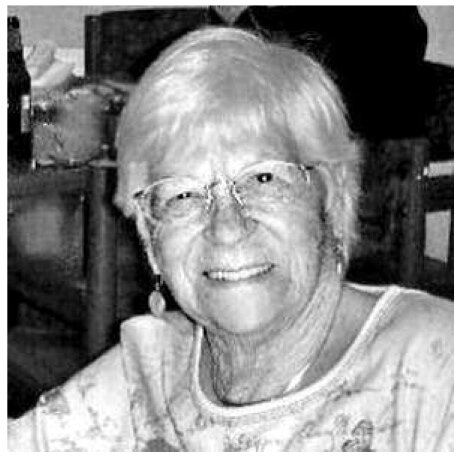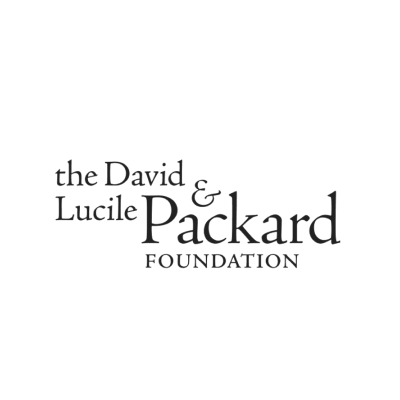Legacy Gift Stories
June Hamilton was a quiltmaker and long-time volunteer at the San Jose Museum of Quilts & Textiles in the 1980s and 1990s. When tragedy struck her family, she found solace at the Museum, in the company of other volunteers and quilt making. Former Museum executive director Jane Przybysz remembers June:
She was a tried and true volunteer in the Museum store. June was one of those really steady people you could count on. Even when she was recovering from surgery or an illness and had to get someone else to drive her around, she’d get back to volunteering at the Museum as soon as she could. So in that sense, she was one tough cookie! I can still hear her voice—it was low and quiet, a little gravely. And she often had a twinkle in her eye that paired with a wry sense of humor.
When June Hamilton’s estate was settled, the Museum was notified that she had left half of her wealth to the Museum.
Her extraordinary legacy gift has transformed the Museum. Thanks to this unexpected infusion of funds, the Museum has been able to increase staffing, expand programs, complete some capital improvements, and maintain a cash reserve.
Linda Gass, Member
June Hamilton Legacy Circle
My Values Are in My Art
“Wow, this is way more interesting than I thought it would be.”
Linda Gass, a long-time member of San Jose Museum of Quilts & Textiles told us "The goal of my artwork is to raise awareness about the environment and climate change. My life and work mirror these values of caring for the environment and for people. As part of this I want to share my skills, knowledge, financial resources and to make sure that the Museum continues when I am gone so that people can keep on enjoying textile art and learn about critical social issues through fine art."
Many Museum members are familiar with Linda's finely detailed quilts with aerial imagery of California landscapes and waterways through exhibits in 2003 and 2017, and through her beautiful greeting cards in the Museum gift shop.
She appreciates that the Museum is one of very few museums dedicated to textiles and it has been a leader in connecting textiles and contemporary art. That is a primary reason why Linda has been a donor and member for more than twenty years. She is also keenly aware that the familiarity of textiles to all people, whether museum-goers or not, allow Museum exhibitions to connect with new and traditional audiences on many levels.
Linda values the community that the museum brings together and says, "Exhibition openings are especially important to me because they give me the opportunity to reconnect with others who care deeply about textile art and also serve as a focal point for our community. Looking at other artist's works and seeing how people respond moves my creativity forward"
As an artist, audience member and community member she appreciates that the Museum excels at presenting history and content in a way that is so engaging. As an example of this, she remembers a First Friday where she heard a viewer exclaim, “Wow, this is way more interesting than I thought it would be!” She also feels that “the interpretative materials are always well done and exhibits include objects that are in themselves fascinating. Most people who have not seen textiles before in museums readily find them interesting and intriguing.” Her financial donations over the years have helped provide significant interpretive material including books, exhibition catalogs, and lectures.
Linda Gass has been drawn to art ever since she was old enough to hold a crayon and early on learned to sew and embroider from her grandmother. After earning a BA in computer science and working in tech for ten years she was able to start a second career with her first love— textiles, color and texture. In the late 1990s she was on a Textile Arts Council Tour at the de Young Museum and connected with former Museum Director Jane Przybsz. That launched a connection between Linda, the Museum in San Jose and a whole new audience.
In appreciation for the Museum's role in her growth as an artist, Linda has made a bequest in her will to ensure that the Museum can continue to inspire and support artists and audiences in the decades ahead.
Sarabelle & Tom Hitchner, Members
June Hamilton Legacy Circle
Give More than you Receive
“Quilting is an art form that needs to be shown.”
The Hitchner’s have a wide and varied background in business, nonprofits, and textiles. These all came into alignment several years ago through their longtime involvement with the San Jose Museum of Quilts and Textiles.
Starting from her board of director’s tenure with a natural resources agency in Vermont, Sarabelle has always liked to see nonprofits thrive. Similarly, Tom shared his skills to help local health centers through participating on boards. They brought this volunteer experience to California a decade later.
Sarabelle’s background is steeped in stitching. Her family handed down several items through many generations. She has ‘crazy quilts’ her grandmother sewed for three grandchildren. As a girl Sarabelle did crewel, imprinted cloth, and worked with kits. She took a 35-year break, not picking up a needle until her parents 50th wedding anniversary in 1993. She has saved many family heirlooms, and some of her own work done as a child.
Growing up Tom had no knowledge of quilts or textiles. He initially became fond of the artform at the Smithsonian Museum. He viewed ‘light-on-light’ quilts in which all you can see is the stitching. He was instantly hooked, wanting to see more quilts.
Sarabelle was the first to connect with San Jose Museum of Quilts and Textiles. She and Tom lived downtown. While walking through the promenade at the Museum’s prior location she struck up a conversation with Jane Przybysc, then the Museum’s executive director. Sarabelle had not visited prior to this. The next thing she knew she was on the board. She helped with the purchase of the new building, its now-permanent home.
Jane masterminded the move however she became overextended. She was in charge of everything else as well. The board told her that she could not do it all. Not too long after Sarabelle joined the board, she introduced Tom to volunteering at the Museum. Eventually he too became involved with the building purchase to manage the project. He was putting in time far beyond the hours of his fulltime job. He shortly retired from his job and simultaneously become business and building manager.
While Sarabelle initiated Tom’s involvement with the Museum, it was Jane who was the major influence on both of them. One result was that Tom became much better versed on art quilts as well as with those whose quilts were hung.
The Hitchner’s are a little dismayed by the major focus our culture has placed on technology. The arts are extremely important, quilting among them as a tactile art. They would like to see quilting flourish.
The Museum is an important institution for the Hitchner’s because many other museums don’t take quilting seriously. It is an art form that needs to be shown. While there are a lot of collectors, Sarabelle and Tom would like to see more places where people can view, as there are precious few opportunities in this country.
They Hitchner’s would like to pass along their wisdom, talent, and money to make things happen, to, build institutions, the Museum among them. Their legacy gifts reflect an important value of theirs— giving more than they receive.
Anonymous
Support Women’s Art and Women’s Stories
“Quilting and women's art are important to me. I grew up crocheting, embroidering, and with an appreciation of textile and fine arts, but I had no exposure to quilting until I was an adult. I was blown away by an exhibition at the American Museum of Contemporary Crafts showcasing the late 1970's quilt revival and what could be accomplished within that genre that didn't look a thing like a traditional quilt. I have been hooked on quilting ever since, enjoying every aspect of making one, whether it is an art piece or for actual use. I especially enjoy the design process.
It is clear to me that such art must be in institutions so future generations can discover what I discovered in my 20s. It is also important for non-traditional fine artists to be acknowledged and exhibited so they get the recognition they deserve. Quilt artists are mostly female and female art has long been ignored and disparaged because it often doesn't fit "traditional" genres of "fine art". I take the position that textile arts are traditional art; after all what is a painting but canvas with pigment on it?
This is why I have been a long-time supporter of the Museum and hope the bequest in my estate plan will continue to support it after I am gone. I heartily encourage anyone who believes in supporting women's art and women's stories to join me in supporting the Museum through a legacy gift.”
For more information: legacy@sjquiltmuseum.org










